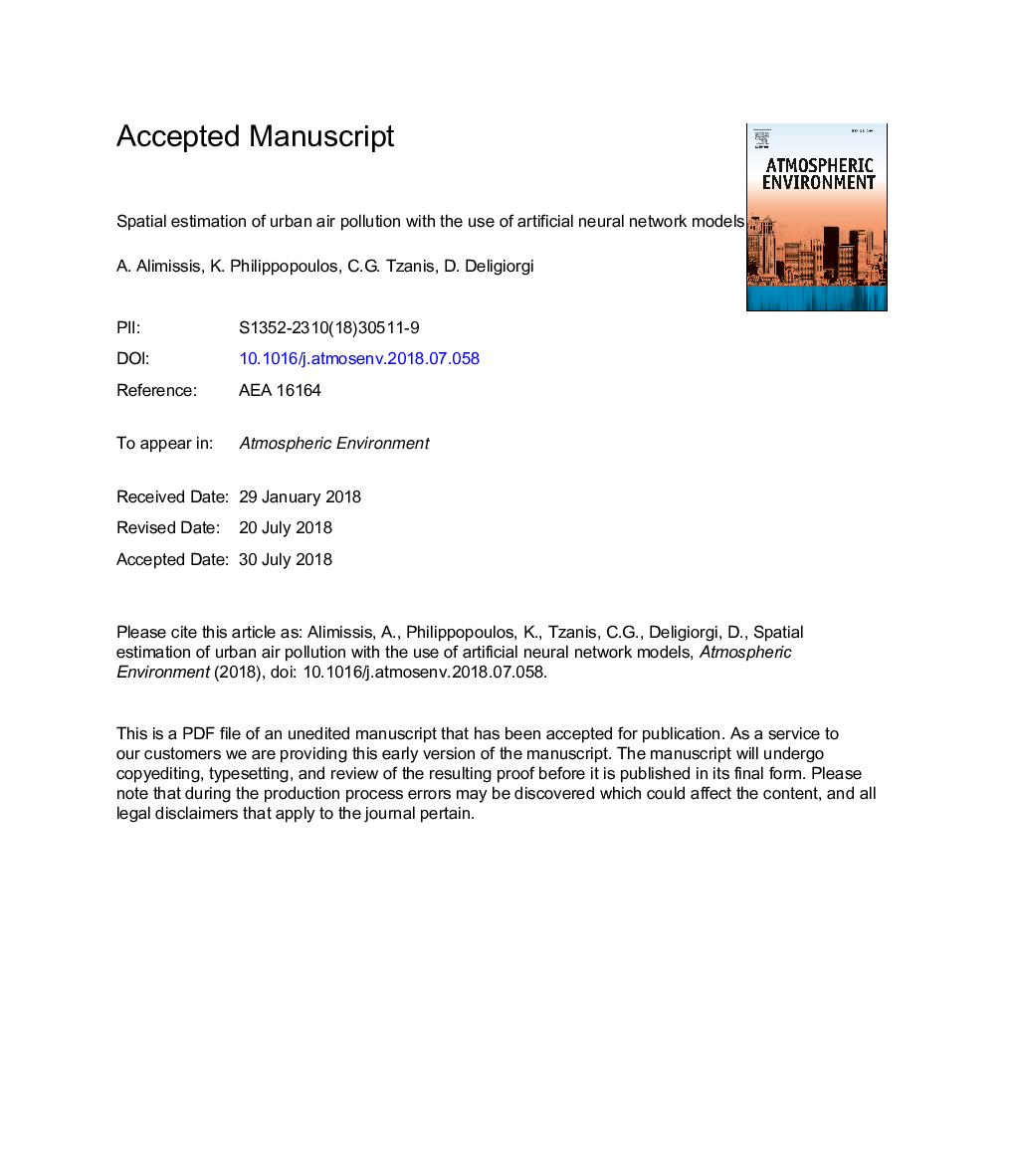| کد مقاله | کد نشریه | سال انتشار | مقاله انگلیسی | نسخه تمام متن |
|---|---|---|---|---|
| 8863397 | 1620283 | 2018 | 18 صفحه PDF | دانلود رایگان |
عنوان انگلیسی مقاله ISI
Spatial estimation of urban air pollution with the use of artificial neural network models
ترجمه فارسی عنوان
برآورد فضایی آلودگی هوا شهری با استفاده از مدل های شبکه عصبی مصنوعی
دانلود مقاله + سفارش ترجمه
دانلود مقاله ISI انگلیسی
رایگان برای ایرانیان
کلمات کلیدی
کیفیت هوا، درونزاسیون فضایی، شبکه های عصبی مصنوعی،
ترجمه چکیده
از بین رفتن کیفیت هوا در شهری در سطح جهان یکی از مسائل زیست محیطی اولیه و شواهد علمی است که در معرض آلودگی هوا با اثرات جدی سلامت قرار می گیرد. این واقعیت اهمیت تولید میدان های دقیق آلودگی هوا را برای تعیین ریسک های مربوط به سلامت در حال حاضر و آینده نشان می دهد. روش های تعبیه برای ارزیابی نقطه در زمینه مدل آلودگی هوا، امکان تخمین غلظت آلاینده ها را در مکان های غیرمجاز فراهم می کند. هدف اصلی این مطالعه، ارزیابی دو روش درون یابی، شبکه های عصبی مصنوعی و رگرسیون خطی چندگانه، با استفاده از داده ها از یک شبکه نظارت بر کیفیت هوای شهری واقع در منطقه بزرگتر از شهر آتن در یونان است. نتایج حاصل از 5 آلودگی هوا تنظیم شده (دی اکسید نیتروژن، منوکسید نیتروژن، اوزون، منوکسید کربن و دی اکسید گوگرد) با استفاده از مجموعه ای از همبستگی و اندازه گیری های آماری تفاوت و توزیع مجدد مقایسه شده است. شبکه های عصبی مصنوعی در اکثر موارد به طور قابل توجهی برتر هستند، به خصوص اگر کیفیت شبکه کیفیت هوا محدود باشد و منجر به کاهش سطح همبستگی مکانی در بین سایت های نظارت شود.
موضوعات مرتبط
مهندسی و علوم پایه
علوم زمین و سیارات
علم هواشناسی
چکیده انگلیسی
The deterioration of urban air quality is considered worldwide one of the primary environmental issues and scientific evidence associates the exposure to ambient air pollution with serious health effects. This fact highlights the importance of generating accurate fields of air pollution for quantifying present and future health related risks. Interpolation methods for point estimations in the field of air pollution modelling enable the estimation of pollutant concentrations in unmonitored locations. The main objective of this study is to evaluate two interpolation methodologies, Artificial Neural Networks and Multiple Linear Regression, using data from a real urban air quality monitoring network located at the greater area of metropolitan Athens in Greece. The results for five regulated air pollutants (Nitrogen dioxide, Nitrogen monoxide, Ozone, Carbon monoxide and Sulphur dioxide) are compared through the use of a set of correlation and difference statistical measures and residuals distribution. Artificial neural networks are found in most cases to be significantly superior, especially where the air quality network density is limited, leading to a decreased degree of spatial correlations among the monitoring sites.
ناشر
Database: Elsevier - ScienceDirect (ساینس دایرکت)
Journal: Atmospheric Environment - Volume 191, October 2018, Pages 205-213
Journal: Atmospheric Environment - Volume 191, October 2018, Pages 205-213
نویسندگان
A. Alimissis, K. Philippopoulos, C.G. Tzanis, D. Deligiorgi,
